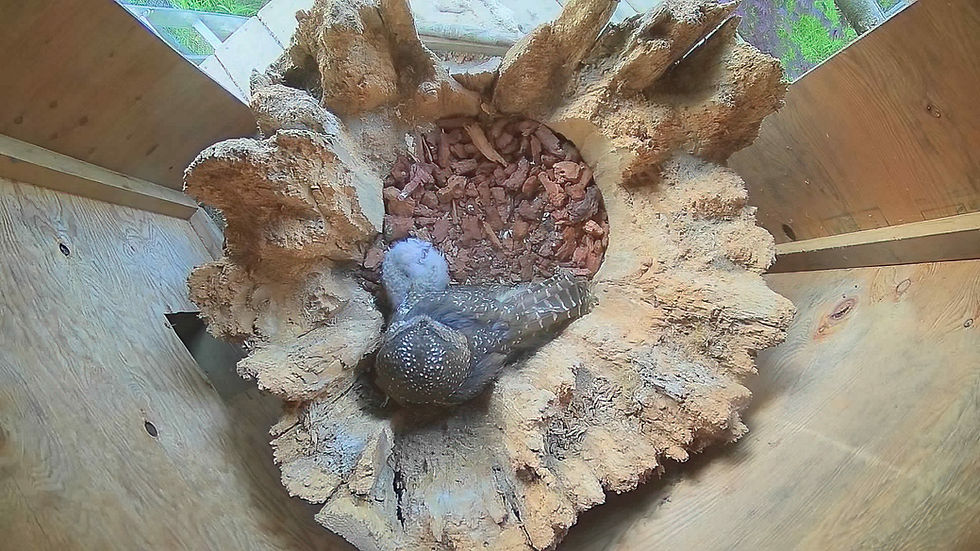Exclusive to Old Growth Forest
- Sep 30, 2022
- 2 min read
Updated: Oct 10, 2023
What’s home for a wild spotted owl?

In Canada, these chocolate brown owls are only found in old-growth forests where trees are 100-200 years old. The forests are mainly made up of Douglas-fir, western hemlock, and western red cedar trees that stand almost 20 meters tall. They are so large that they shade the bushes and ferns from the sun, creating space underneath and between the trees. These spaces are perfect for a spotted owl to navigate through the canopy, hunting woodrats and flying squirrels. The forests also have great habitat for lots of other wildlife, which means there’s plenty of food for the owls.
After generations of living among centuries-old trees, northern spotted owls are incredibly adapted to life in these ancient forests. As cavity nesters, spotted owls need the snags provided by dead standing trees. Spotted owls need connected forest 7x the size of Stanley Park to call home- no living near cities or towns for them. They don’t like human development.
Since only 3% of old-growth forests are still standing in British Columbia, there’s less space for each owl to find enough food and for young owls to find their own home.
The amount of old-growth forests spotted owls need are no longer found in the Lower Mainland and spotted owls are unable to disperse to Vancouver Island. If you spot an owl in these areas, it’s probably the spotted owl’s close relative – the barred owl. Barred owls are more aggressive and competitive. They can move freely across forests, highways, towns, large bodies of water - you name it. This has helped them invade western North America. Because of their flexibility, barred owls also easily kick out northern spotted owls from the few areas that can still support them.
Fortunately, there are over 300,000 hectares of protected spotted owl habitat. Here at the NSOBP, our mission is to breed the spotted owls in our care so that their offspring can be released into these protected areas.
As much as we love spotted owls, the odds of us seeing one in the wild are incredibly low. But there may be a future where we go out camping in the backcountry and find a spotted owl family roosting in a towering Douglas-fir nearby!
This article was originally published in our 2022 Newsletter.








